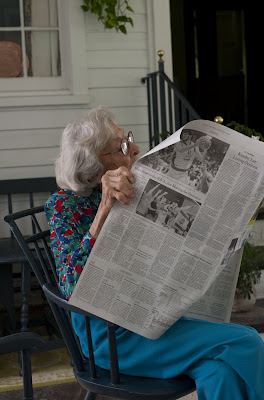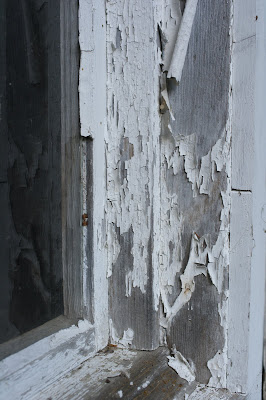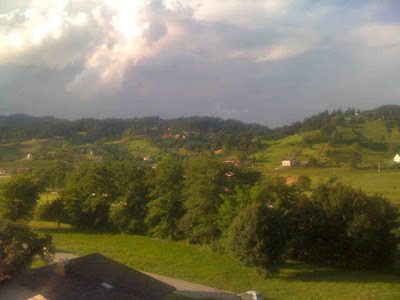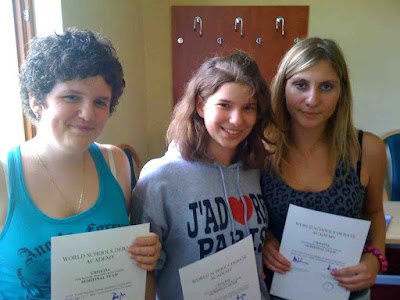|
|
|---|
Friday, July 31, 2009
California K-7 Tour Dates & Locations
Thursday, August 6th
5:30pm to 7:00pm
THE PORTOFINO Hotel & Yacht Club
Pacific II Ballroom
260 Portofino Way
Redondo Beach, CA 90277
310-379-8481
Friday, August 7th
5:30pm to 7:00pm
HILTON Irvine/Orange County Airport
Crystal D Room
18800 MacArthur Blvd
Irvine, CA 92612
949-833-9999
Saturday, August 8th
2:30-4pm
Hilton San Jose – Santa Clara Room
300 Almaden Boulevard
San Jose, CA 95110
408-287-2100
Sunday, August 9th
10am to 11:30am
Marriott San Francisco Union Square
480 Sutter Street
San Francisco, CA 94108
415-398-8900
Attendees will be able to try out the K-7 along with an assortment of PENTAX glass. Meet and greet with other photographers and enter to win a K-7. One camera body will be given away at each event.
Our featured photographer at all the California tour stops will be Mark Dimalanta. Mark will make a short presentation showing his work and share his experience to date shooting with the K-7. For those not familiar with Mark, here's a brief bio and links to his sites:
"Preferring to choose lifestyle over his profession, Dr. Mark Dimalanta of Huntington Beach, California left a promising career in medicine to chase a lifelong passion for surfing and photography. At present, He shoots surfing lifestyle images to share his world through the eyes of his Pentax. Mark travels the world over to chase perfect waves, and dreams of one day getting lost in the beauty of the Philippine Islands, the last bastion of pristine surf..."
Mark's website
Surfdoc Blog
John Carlson and I will be at the Orange County events (Redondo Beach and Irvine) and we look forward to meeting those SoCal Pentaxians who will be able to join us.
WDI Program in Europe Prepares for 2009
THE SEVENTH INTERNATIONAL DEBATE ACADEMY SLOVENIA
& IDAS/FUTUR 2009 TOURNAMENT
THE BEST IN WUDC/BP DEBATE INSTRUCTION AND COMPETITION
21-29 NOVEMBER 2009
Full program for students – instruction, IDAS/FUTUR 2009 tournament
IDAS/FUTUR 2009 tournament for students – tournament in Ljubljana at the Faculty of Administration-University of Ljubljana.
Full program for trainers, teachers, coaches, club leaders, judges at any level in any debate format.
SPECIFIC DATES
Arrive in Ormoz, Slovenia November 21 2009
Instruction in Ormoz November 21-26 2009
Transfer to Ljubljana morning 27 November 2009
FUTUR tournament in Ljubljana afternoon 27-29 November 2009
APPLICATION FORMS AVAILABLE FOR TOTAL PROGRAM OR JUST TOURNAMENT
Organized by:
ZIP – Za in proti (ZIP), Pro et Contra, Institute for the Culture of Dialogue, Slovenia
WDI – World Debate Institute, University of Vermont
Debate Club, Faculty of Administration, University of Ljubljana
Scholarship Fund established by 
Download Application Form HERE
FACULTY -- more to come!
- Loke Wing Fatt, Singapore: Well known Asian debate trainer, WUDC breaking judge, honorary professorship North-Eastern University China, SAID Singapore, 5th IDAS.
- Jens Fischer, Germany: Berlin Debating Union, Chief Adjudicator at Europeans, 5th IDAS.
- Leela Koenig, Netherlands: Cork Worlds 2009 Best ESL speaker, Top ESL Speaker at Euros 2007 and 2008, DCA Newcastle Euros 2009, CA of Amsterdam, Euros 2010 bid, lecturer at The Hague University, philosophy student at Leiden University. 1st IDAS.
- Chris Langone, USA: Cornell University. 2nd IDAS.
Isabelle Loewe, Germany: Winner EUDC (ESL), ESL-Semifinalist Worlds 2007, DCA Tallinn EUDC 2008; CA/DCA of several tournaments, among them, Prague, Tilbury IV, Yeditepe Open, Jacobs Open; Winner and finalist of several tournaments in Europe; Officer for International Law and Human Rights Education
- Branka Marusic, Croatia: Former President Europeans Council, IDAS Finalist, 3rd IDAS.
- Rhydian Morgan, UK: Chief Adjudicator and Finals judge at numerous tournaments, Welsh Debating Federation, World Debate Institute faculty 2008-09, 3rd IDAS.
- Maja Nenadovic, Croatia: Founder of several debating societies across Europe, currently busy with introducing debate to countries in the Western Balkans region, and with finishing her PhD in political science at the University of Amsterdam. 2nd IDAS.
- Debbie Newman, UK: President of Cambridge Union, England and Wales National Champion, WSDC 2008 World Champion coach for England. 2nd IDAS.
- Alfred Snider, USA: Professor at University of Vermont, Director World Debate Institute, USA Coach of the Year, six recent debate textbooks, Convener 2009 US Universities Nationals, 7th IDAS.
- Bojana Skrt, Slovenia: Director ZIP, three times WSDC EFL World Champion coach, 7th IDAS.
- Anne Valkering, Netherlands: Oxford ESL semi-finalist 2006, finalist 2007, winner ESL final Manchester IV 2007; EUDC ESL finalist 2006, semi-finalist 2007, quarterfinalist 2008, ESL second speaker 2008, fifth speaker 2006; WUDC ESL champion 2008; DCA Dutch Nationals 2009, CA Bonaparte Debate Tournament 2007, DCA Amsterdam Open 2008 and 2009, CA Sciences Po IV 2009.
CURRICULUM
- STUDENT TRAINING : Each Instruction day features a main lecture, exercise and drill sessions, and two complete critiqued practice debates. Many elective classes offered. Many training preparation sessions offered. Judge evaluation and training offered. Advanced, basic and beginner tracks available. The best way to get ready forn WUDC in Turkey.
- IDAS 2009 TRAINER PROGRAM
The International Debate Academy Slovenia will be offering a special track for trainers, coaches and those interested in learning about how to train debaters and create debate organizations such as clubs, academic programs and leagues. The program will call upon the extensive experience of the faculty to provide specialized training, including: Basic debate training steps: observation, advice from experienced trainers and curriculum guides Judging: instruction, shadow judging, real judging experience Tournaments: hosting, administering, including tabulation software. Advanced debate training: observation, advice from experienced trainers, curriculum guides. Organizing: recruiting debaters, implementing training, scheduling meetings, publicity. Attendees will have a sample judging session every morning as well as a special training session in the afternoon. All events at the program will also be open to attendees. Special needs and requests specific to individuals can be met if given advance notice. - TOURNAMENT: Sponsored by IDAS, ZIP and hosted by Faculty of Administration University of Ljubljana. Six preliminary rounds and semifinals in the WUDC format. No team caps as of now. Faculty will serve as adjudication core and administration for the tournament.
COST
250 Euros for full program, 60 Euros for tournament.
Fees: Includes all meals, double rooms, instructional materials, transportation from Ormoz to Ljubljana, and social activities. Accommodations: Rooms and full meals provided in Ormoz and Ljubljana. Social activities each evening. Limited crash available for tournament.
Scholarships: We hope to offer substantial scholarships to needy applicants. Scholarship forms available soon.
Financial Disclosure: IDAS is a non-profit program, trainers are not paid, trainer travel is not reimbursed, participation fees pay for attendee expenses of rooms and food only, trainer accommodations and food and other costs are covered by ZIP.
Social Events: We will have frequent social events. We will not distribute free alcohol to 18+ attendees out of the workshop fees. We will seek soft drinks-beer-wine sponsors. We prioritize scholarships for attendees over free alcohol. We want as many people as possible to join the program.
Website: http://debate.uvm.edu/idas.html
Blogsite: http://internationaldebateacademy.blogspot.com/
Organizing Committee:
Director of the Academy: Bojana Skrt, ZIP, bojana.skrt@siol.net
Head of Training: Alfred C. Snider, World Debate Institute, University of Vermont, alfred.snider@uvm.edu
Tournament Host: Helena Felc
July 31, 2009 - Praying in the Tube
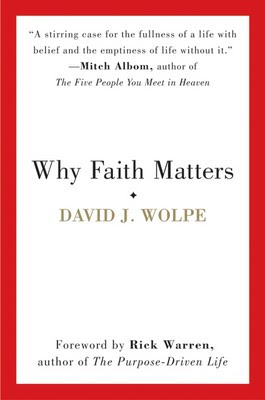 Finishing out my vacation, I’ve been enjoying some quiet time up at our Adirondacks place, near Jay, New York. One of the good books I’ve been reading is Why Faith Matters, by Rabbi David J. Wolpe. David thoughtfully sent me a copy of his book, after reading my May 9, 2009 blog entry about him.
Finishing out my vacation, I’ve been enjoying some quiet time up at our Adirondacks place, near Jay, New York. One of the good books I’ve been reading is Why Faith Matters, by Rabbi David J. Wolpe. David thoughtfully sent me a copy of his book, after reading my May 9, 2009 blog entry about him.The book has a lot to recommend it. It’s a thoughtful, honest answer to recent critics from the scientific world, like Christopher Hitchens and Richard Dawkins, who have ridiculed faith and elevated scientific insights in its place. (It’s also a quick read, very accessible to people without extensive training in either theology or science.)
David is in the same place I am on that question, maintaining that religion and science need not be in conflict with one another. There’s no reason why a scientist cannot also be a religious believer, nor a believer someone who also accepts the insights of evolutionary biology or physics.
One part of the book that speaks personally to me is when David shares his personal experience as a cancer survivor. Like me, he has non-Hodgkin lymphoma, in an incurable form. Some years previously, he had surgery to remove a brain tumor. Here, he writes of his experience of prayer, as he’s undergone various medical tests:
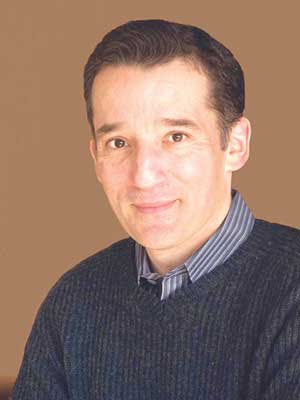 “Throughout my various illnesses, I prayed. My prayer was not answered because I lived; my prayer was answered because I felt better able to cope with my sickness. Each time I go for my regular tests, the CT or PET scans or an MRI, each time I am moved into the metal tube that will give an image of sickness or health, I pray. I do not pray because I believe God will give me a clear scan. I pray because I am not alone, and from gratitude that having been near death I am still in life. I pray not for magic but for closeness, not for miracles but for love.
“Throughout my various illnesses, I prayed. My prayer was not answered because I lived; my prayer was answered because I felt better able to cope with my sickness. Each time I go for my regular tests, the CT or PET scans or an MRI, each time I am moved into the metal tube that will give an image of sickness or health, I pray. I do not pray because I believe God will give me a clear scan. I pray because I am not alone, and from gratitude that having been near death I am still in life. I pray not for magic but for closeness, not for miracles but for love.The novelist George Meredith wrote, ‘Who rises from his prayer a better man, his prayer is answered.’”
– Why Faith Matters (HarperOne, 2008), p. 25.
Some of the most heartfelt prayers any of us pray are those uttered “in the tube.” When we find ourselves in the tube, what do we pray for? Miracles?
I’ve wondered, on similar occasions, what the point is of praying for a negative test result (“negative” is, of course, a positive or good result in medical parlance). The machine, be it CT scanner or PET scanner or whatever, is simply taking a picture of whatever is there. I’m not praying for the result to come out skewed, of course – it’s in my best interest that the test be accurate, that my doctors fully understand whatever’s going on inside my body. When we offer prayers in the tube, are we praying that, if there’s a malignancy there, God will vaporize it then and there, in the few seconds before the picture is taken?
No, as David indicates, I think prayer is a good bit more complex than that. When we pray, we often do have specific results in mind, but more importantly, we’re seeking to be in communion with God, and perhaps also to feel a sense of solidarity with others who form the community of prayer. Indeed, we pray “not for magic but for closeness, not for miracles but for love.”
Of miracles, C.S. Lewis once wrote: “Miracles are a retelling in small letters of the very same story which is written across the whole world in letters too large for some of us to see.”
The point is, to catch that larger vision.
Prayer changes things. Prayer changes us.
Thursday, July 30, 2009
WDI World Schools Session Thrives
The 2009 WDI world schools debate workshop began on Sunday and is in high gear as of today.
Each day begins at 9 AM and about half the time ends at 9 PM and half the time at 5 PM. There was even an afternoon at the beach on Tuesday as well as a number of evening movies.
But what students seem to like to do the most in their free time is prepare for the motions by working in the library. Bojana Skrt, program director, was astounded that after library work was over students still wanted to stay on. "They are very curious and very ambitious, so I just let them go ahead." All agree that the group is very well-informed and for the most part are already strong public speakers.
The group has students from the USA, of course, but also students from Greece, Canada, Korea and Kuwait. The faculty is Bojana Skrt ZIP Slovenia, Rhydian Morgan of Stylus Communications UK, Debbie Newman of UK and Alfred Snider of WDI USA.
"This is a unique opportunity," sad WDI director Snider. "Bojana, Rhydian and I have been working with the same curriculum over a one week period at the World Schools Debate Academy held in Slovenia, but now we get to expand it here because we have a two week session. It allows for a lot more depth as well as just a bit more recreation time for the students."
Here is the schedule for the sessions:
World Debate Institute, University of Vermont
WORLD SCHOOLS DEBATE WORKSHOP
July 25 – August 7, 2009
Arrival: Saturday, 7/25
3:00 – 5:00 Check-in to Residential Hall
Day 1: Sunday, 7/26
9.00 – 10.00 Opening ceremony, briefing
10.00 – 11.30 Introduction to debating, lecture
11.30 – 1.30 Lunch
1.30- 3.30 Library tour, librarians doing it
4.00 – 5.00 How to research for debate, lecture
5.00 – 7.00 Dinner
Free evening
Day 2: Monday, 7/27
9.00 – 10.00 Public speaking, lecture.
10.00 – 11.30 Public speaking, exercises
11.30 – 1.30 Lunch
1.30 – 2.30 Introduction to Worlds School Debate Format, note taking, lecture
2.30 – 3.30 Debate preparation
3.30 -5.00 Debate and critique
5.00 – 7.00 Dinner
7.00 – 9.00 Researching and brainstorming for the next day debate.
Day 3: Tuesday, 7/28
9.00 – 10.00 Debate preparation
10.00 – 11.30 Debate and critique
11.30 – 1.00 Lunch
Beach time
5.00 - Dinner and free evening
Day 4: Wednesday, 7/29
9.00 - 10.00 Argumentation 1, lecture,
10.00 – 11.30 Argumentation exercises
11.30 - 1.00 Lunch
1.00 – 2.00 Debate prep
2.00 - 5.00 Debate and critique, repeat
5.00 – 7.00 Dinner
7.00 – 9.00 Researching and brainstorming for the next day debate
Day 5: Thursday, 7/30
9.00 – 11.30 Proposition case, lecture and exercises
11.30 – 1.30 Lunch
1.30 – 2.30 Role of the speakers, lecture
2.30 – 3.30 Debate prep
3.30 – 5.00 Debate and critique.
5.00 – 7.00 Dinner
Free evening
Day 6: Friday, 7/31
9.00 – 11.30 Points of information, lecture and drills
11.30 – 1.30 Lunch
1.30 – 3.30 Debate prep
3.30 – 5.00 Debate and critique of debate
5.00 – 7.00 Dinner
7.00 – 9.00 Repeat debate
Day 7: Saturday, 8/1
9.00 – 11.30 Motion analyses, lecture and drills
11.30 – 1.30 Lunch
1.30 – 2.30 Style
2.30 – 3.30 Debate prep
3.30 – 5.00 Debate and critique
5.00 – 7.00 Dinner
7.00 – 10.00 Free evening on Church street
Day 8: Sunday, 8/2
Free time
11.30 – 1.30 Lunch
1.30 – 2.30 Third speeches, lecture
2.30 – 3.30 Debate prep,
3.30 – 5.00 Debate and critique
5.00 – 7.00 Dinner
7.00 – 9.00 Researching and brainstorming for the next day debate
Day 9: Monday, 8/3
9.00 – 11.30 Argumentation 2
11.30 – 1.30 Lunch
1.30 – 2.30, Opposition case
2.30 – 3.30 Debate prep
3.30 – 5.00 Debate and critique
5.00 – 7.00 Dinner
7.00 – 9.00 Researching and brainstorming for the next day debate
Day 10: Tuesday, 8/4
9.00 – 11.30 Reply speeches, lecture and drills
11.30 – 1.30 Lunch
1.30 – 2.30 Open forum
2.30 – 3.30 Debate prep
3.30 – 5.00 Debate and critique
5.00 – 7.00 Dinner
Free evening
Day 11: Wednesday, 8/5
Free morning
Mini tournament
Round one:
1.30 – 4.00 Round 1
4.00 – 6.00 Dinner
6.00 – 8.00 Round 2
Day 12: Thursday, 8/6
9.00 - 11.30 Round 3
11.30 – 1.30 Lunch
1.30 – 4.00 Round 4
4.00 AWARD CEREMONY
5.00 Dinner
Departure: Friday, 8/7
9:00 – 11:00 Check-out of Residential Hall & depart campus
Saturday, July 25, 2009
Sunstone!!
Sunstone!!
Wednesday, July 22, 2009
July 22, 2009 - Dulanermin
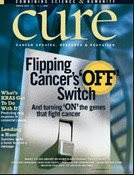 Paging through an old copy of Cure magazine (a publication for cancer survivors), I notice a headline in a full-page ad: “Have you been diagnosed with Follicular Non-Hodgkin’s Lymphoma (NHL) following previous rituximab therapy?”
Paging through an old copy of Cure magazine (a publication for cancer survivors), I notice a headline in a full-page ad: “Have you been diagnosed with Follicular Non-Hodgkin’s Lymphoma (NHL) following previous rituximab therapy?”“That’s me,” says I to myself.
Reading on, I discover it’s an ad for a clinical trial being conducted by Genentech – the drug company that brought us rituximab (Rituxan). They’re also the people who flew Claire and me to Las Vegas a few years ago, to give a little motivational talk to their sales force.
Down at the bottom is a serial number I can use at the clinicaltrials.gov website, to find out more about this study.
I visit that site, key in the number, and come up with a page describing a study of a new investigational drug called Apo2L/TRAIL – trade name, Dulanermin.
It’s a Phase II clinical trial – which means it’s still in the early stages of investigation. As of now, the trial is also fully subscribed: which may be just as well, since I’m not sure I’d want to risk the side effects of a Phase II trial when I’m still in a watch-and-wait mode and feeling good.
It’s interesting to read about this new drug, all the same, because it could be in my future.
Here’s the scoop, from an Amgen press release of a couple months ago (the Amgen pharmaceutical company is conducting this research in partnership with Genentech). Dulanermin is one of a family of “highly selective therapies to induce cancer cell death.” Well, who can argue with that?
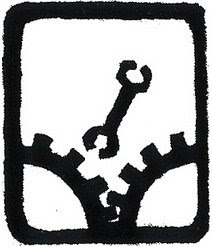 “In cancer,” the article continues, “the dysregulation of apoptosis is critical in the development and survival of tumors.” I know, from previous reading, that apoptosis is cell death – the normal tendency of cells to die according to a genetically-preset timetable, only to be replaced by new cells. In cancer cells, the apoptosis switch is turned off, allowing them to continue to grow and wreak havoc in the body. “The dysregulation of apoptosis” is inscrutable medical jargon for “throwing a wrench into the genetic machinery that would otherwise cause cells to die when they reach the end of their natural lifespan.”
“In cancer,” the article continues, “the dysregulation of apoptosis is critical in the development and survival of tumors.” I know, from previous reading, that apoptosis is cell death – the normal tendency of cells to die according to a genetically-preset timetable, only to be replaced by new cells. In cancer cells, the apoptosis switch is turned off, allowing them to continue to grow and wreak havoc in the body. “The dysregulation of apoptosis” is inscrutable medical jargon for “throwing a wrench into the genetic machinery that would otherwise cause cells to die when they reach the end of their natural lifespan.”Dulanermin – if it fulfills the hopes of the pharmaceutical researchers – would yank that monkey-wrench back out of the machinery, so cells would continue to die according to their normal timetable and would never morph into cancer cells.
The article defines dulanermin as “a recombinant human protein that targets death receptors 4 and 5.” Sounds like something out of Star Wars: “Luke, your mission is to fly your X-fighter along the surface of the Death Star and take out death receptors 4 and 5. May the Force be with you.”
 Go for it, Luke.
Go for it, Luke.Is this the next Rituxan? Impossible to say. Clinical trials like this are being conducted all the time, mostly below the radar of non-medical types like me. Every once in a while, a full-page ad jumps out at us, a reminder that this valuable work is going on.
Kudos to the researchers for keeping up with this sort of thing.
Who knows? If this one ever makes it to a Phase III trial, maybe they can sign me up.
Sunday, July 19, 2009
July 20, 2009 - Where Not to Get Sick
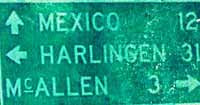
If you haven’t yet read Atul Gawande’s article in the June 1, 2009 New Yorker about the high cost of health care in McAllen, Texas, you should. It’s a must-read for anyone who’s following the health care funding debate.
Why McAllen? Why should that dusty burg at the southern tip of Texas have the highest per capita health care costs in America? Gawande’s article is a detective story, chronicling his efforts to answer that question.
The answer he comes up with is that McAllen’s doctors are responsible for many of these elevated costs. They order up a whole lot of costly, high-tech medical tests, more than most other doctors around the country:
“The most expensive piece of medical equipment, as the saying goes, is a doctor’s pen. And, as a rule, hospital executives don’t own the pen caps. Doctors do.”
Remarkably, the highly-tested patients of McAllen are no healthier than patients elsewhere. Compared to some cities with lower medical costs, they actually do worse.
 It’s not that McAllen’s doctors are less competent than doctors elsewhere, or that they’re morally challenged. Gawande’s explanation is that the entire medical system in McAllen is engineered – to a degree not typical of many other communities – to encourage doctors to order marginally-necessary, or even unnecessary, tests, and to prescribe costly treatments that may be no more effective than cheaper alternatives.
It’s not that McAllen’s doctors are less competent than doctors elsewhere, or that they’re morally challenged. Gawande’s explanation is that the entire medical system in McAllen is engineered – to a degree not typical of many other communities – to encourage doctors to order marginally-necessary, or even unnecessary, tests, and to prescribe costly treatments that may be no more effective than cheaper alternatives.There are lots of reasons for this. According to Gawande, it’s a complex constellation of factors, including:
- a high rate of for-profit, physician-owned medical facilities;
- an entrepreneurial culture that sees doctors as businessmen and -women, rather than healers;
- a well-founded fear of lawsuits that leads to defensive medicine;
- comparatively less coordination of care than in other places, leading to duplication of services.
“Providing health care is like building a house. The task requires experts, expensive equipment and materials, and a huge amount of coordination. Imagine that, instead of paying a contractor to pull a team together and keep them on track, you paid an electrician for every outlet he recommends, a plumber for every faucet, and a carpenter for every cabinet. Would you be surprised if you got a house with a thousand outlets, faucets, and cabinets, at three times the cost you expected, and the whole thing fell apart a couple of years later? Getting the country’s best electrician on the job (he trained at Harvard, somebody tells you) isn’t going to solve this problem. Nor will changing the person who writes him the check.”
It’s the system’s fault, says Gawande. This is a classic example of a systemic problem.
 Gawande compares McAllen to another town that’s in the lowest 15 percent of health care costs, nationwide: Rochester, Minnesota, home of the world-famous Mayo Clinic. The most significant difference is that a high percentage of doctors in Rochester are employees of the clinic, rather than entrepreneurial owners of their own little medical businesses. Success in that setting is measured in healthy patients, not the number of patients served. The medical system in Rochester is engineered to maximize health outcomes rather than profits.
Gawande compares McAllen to another town that’s in the lowest 15 percent of health care costs, nationwide: Rochester, Minnesota, home of the world-famous Mayo Clinic. The most significant difference is that a high percentage of doctors in Rochester are employees of the clinic, rather than entrepreneurial owners of their own little medical businesses. Success in that setting is measured in healthy patients, not the number of patients served. The medical system in Rochester is engineered to maximize health outcomes rather than profits.They say this article has become required reading in the White House, by staffers tasked with proposing to Congress a workable fix for the health-care funding crisis.
No wonder.
The American solution to medical cost-containment, until now, has been to rely on the insurance companies to ride herd on all this Wild West confusion. The only problem is, the insurance companies are no more concerned with positive health outcomes than physicians are. The insurance companies work for their stockholders, not for the patients.
We need to develop a health-care system that does work for the patients. Other countries (Britain, Canada, France) seem to know how do this better than we. This is a rare opportunity for our national leaders to think outside the box and develop a funding system that truly serves the greatest number of people.
Just don’t blow it, politicians. Take the lobbyists’ hands out of your pockets and pay attention to your constituents. We’re hurtin’ out here – especially in places like McAllen, Texas.
DA 35mm Macro - A Year Later
It was interesting that the initial reaction to this lens fell firmly into two camps...those that "got it" immediately and those that criticized Pentax for calling this a Macro lens and dismissed it as having no value in anyone's camera bag.
Unfortunately, most of the confusion and criticism of this lens (by folks who had not even used the lens) was semantics driven by our decision to call this a "macro" lens. I know our engineers debated over the naming of this lens realizing that some people would assume by the name that this lens was a dedicated "macro" design. In retrospect, the "macro" moniker was probably the simplest way to identify the additional close focus feature of this lens.
A year has passed, and with the 35mm Macro now in the hands of many Pentaxians, I'm glad to see the increase of posts by photographers who are really pleased with this lens. It's a great example of why our Limited lens are unique in the industry. Much credit goes to our engineers who really think about the way photographers shoot and then design a lens offering the form and function that will best enhance your particular shooting style.
These 35mm Macro photos shot with the K-7 in RAW at ISO 400. Processed with CS4 to produce JPEGs for posting here on Blogger. Click on any thumbnail to see a larger file.
Wednesday, July 15, 2009
July 15, 2009 - A Common Story
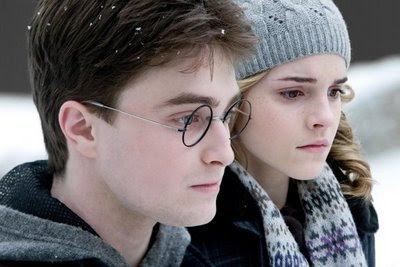 Last night, Claire and I, along with our daughter Ania and niece Elizabeth, went to a midnight premiere of the film, Harry Potter and the Half-Blood Prince. It did not disappoint.
Last night, Claire and I, along with our daughter Ania and niece Elizabeth, went to a midnight premiere of the film, Harry Potter and the Half-Blood Prince. It did not disappoint.We’ve been fans of the Harry Potter books for some time, and have eagerly awaited each film as it’s come out.
I was struck by how many people showed up at our local multiplex (they were showing the film on at least two of their screens, possibly more). It’s a remarkable thing how many people of all ages have come to know and love these stories: enough to fill cinemas across the country till half-past three in the morning – and on a workday, at that. Judging from the comments we overheard, a great many of our fellow Potter-o-philes are very familiar indeed with minute details of J.K. Rowling’s teenage-wizarding yarn.
It’s a great thing to have a common story.
I was led to wonder how many people, in these days of secularism, feel such a passionate connection with the biblical story? Once upon a time, novelists, playwrights, screenwriters and other creative types could assume their audience could easily recognize biblical allusions. For example, I’ve been listening to a recording of Steinbeck’s great novel, East of Eden, as I drive around in the car. The book’s loaded with biblical symbolism. Were Steinbeck writing today, would he bother to tie his story so closely to archetypal biblical tales like that of Cain and Abel? Would his readers care?
The success of the Harry Potter oeuvre – and Tolkien’s Lord of the Rings before it – speaks to this secular culture’s hunger for a common story, a deeply moral tale grounded in religious sensibilities.
Yes, it is a great thing to have a common story.
WDI Program in Europe Concludes

The World Debate Institute's program in Europe has finished. The five round tournament at the World Schools Debate Academy has been concluded. The semifinal and final rounds are now concluded. Here are the results.
Vanja Vrecic of Slovenia was the top speaker, followed by Zan Zveplan and Damjan Denkovski. The team called Hair from Slovenia (Zan, Monika Sobocan and Damjan) defeated the team called Big Bang (Vanja Vrfecic, Barbara Zitek and Tamara Juricic) 5-0 in the finals. In the semifinals Big Bang defeated Team Croatia (Ema Karwelic, Nives Orlic, Matea Tomasic) and also the team called Hair advanced over Lawnmowers (from Qatar) (Mohammed Al Sabbagh, Mohammed Hubrack and Moiz Bohra).
The tournament followed a previous wek of instruction with debates, exercises, lectures and elective classes lasting all day each day. Look for lots of videos coming up soon.
The event took place in the beautiful small town of Zrece in the mountains of Slovenia and in a delightful place to stay and eat, Hotel Smogavsc.
Thanks to all of the faculty:
Rhydian Morgan, UK
David Register, USA
Bojana Skrt, Slovenia
Alfred Snider, USA
Ruth Zisman, USA
The great instructors who helped students endlessly deserve thanks:
Maja Cimerman
Filip Dobranic
Anna England-Kerr
More photos coming!
Next year -- bigger and better.








